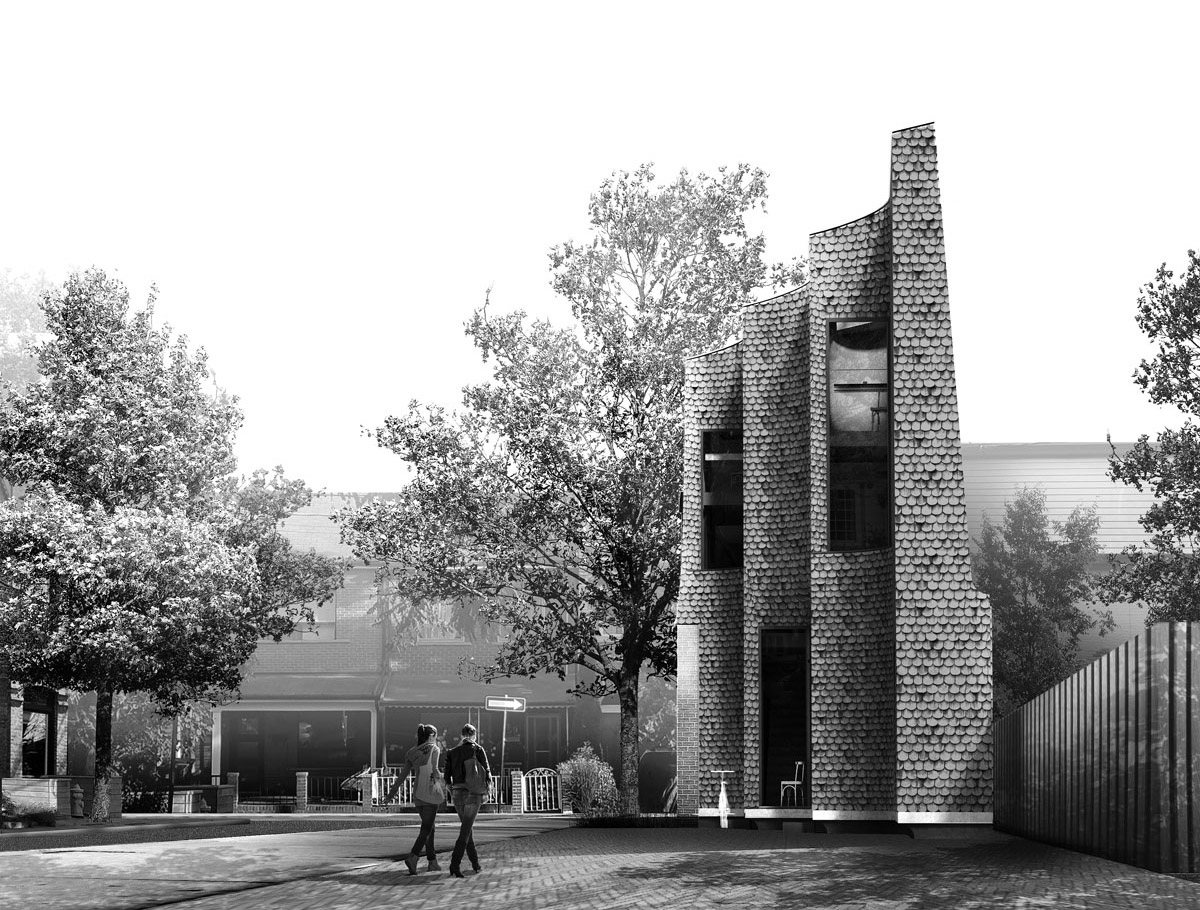
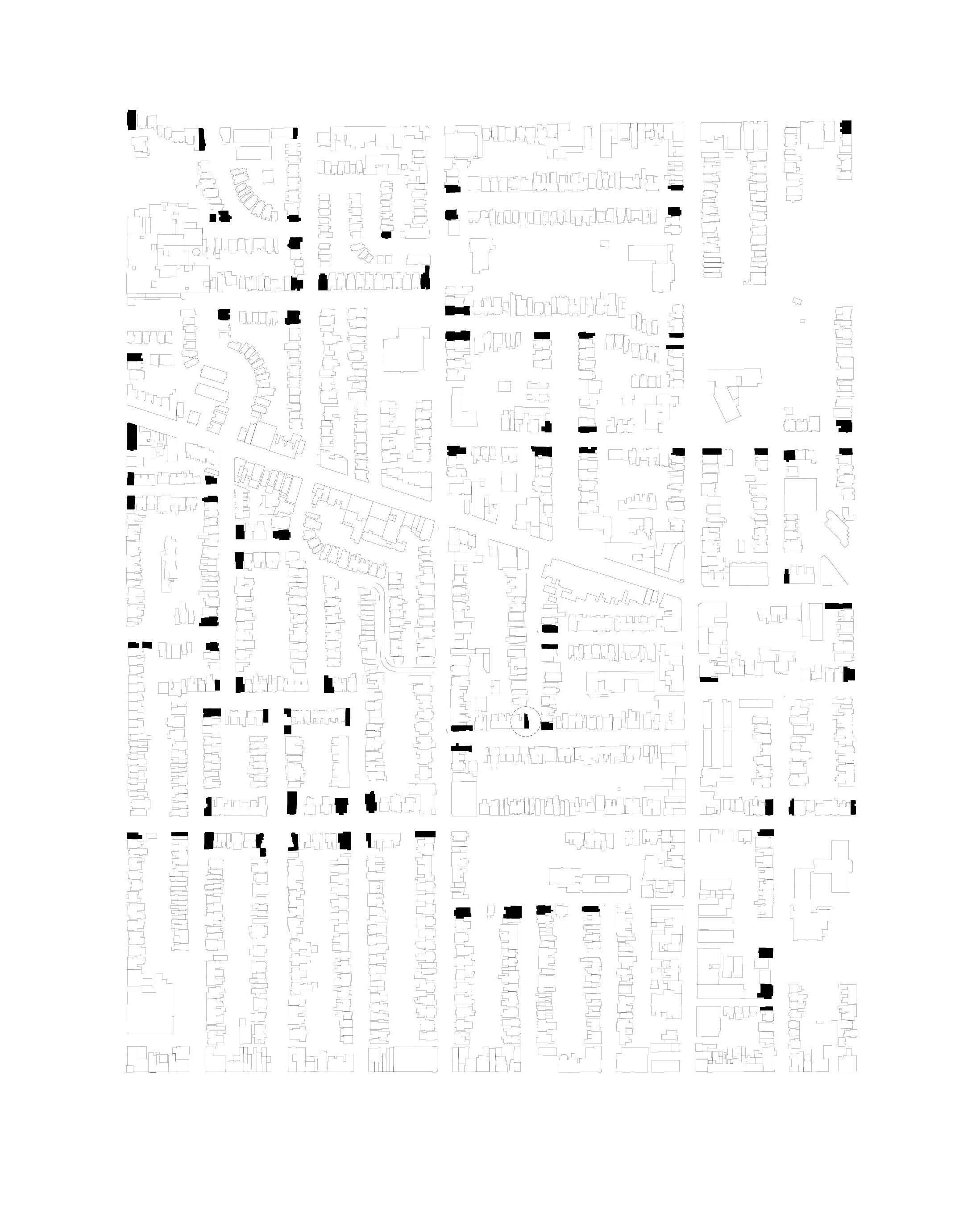


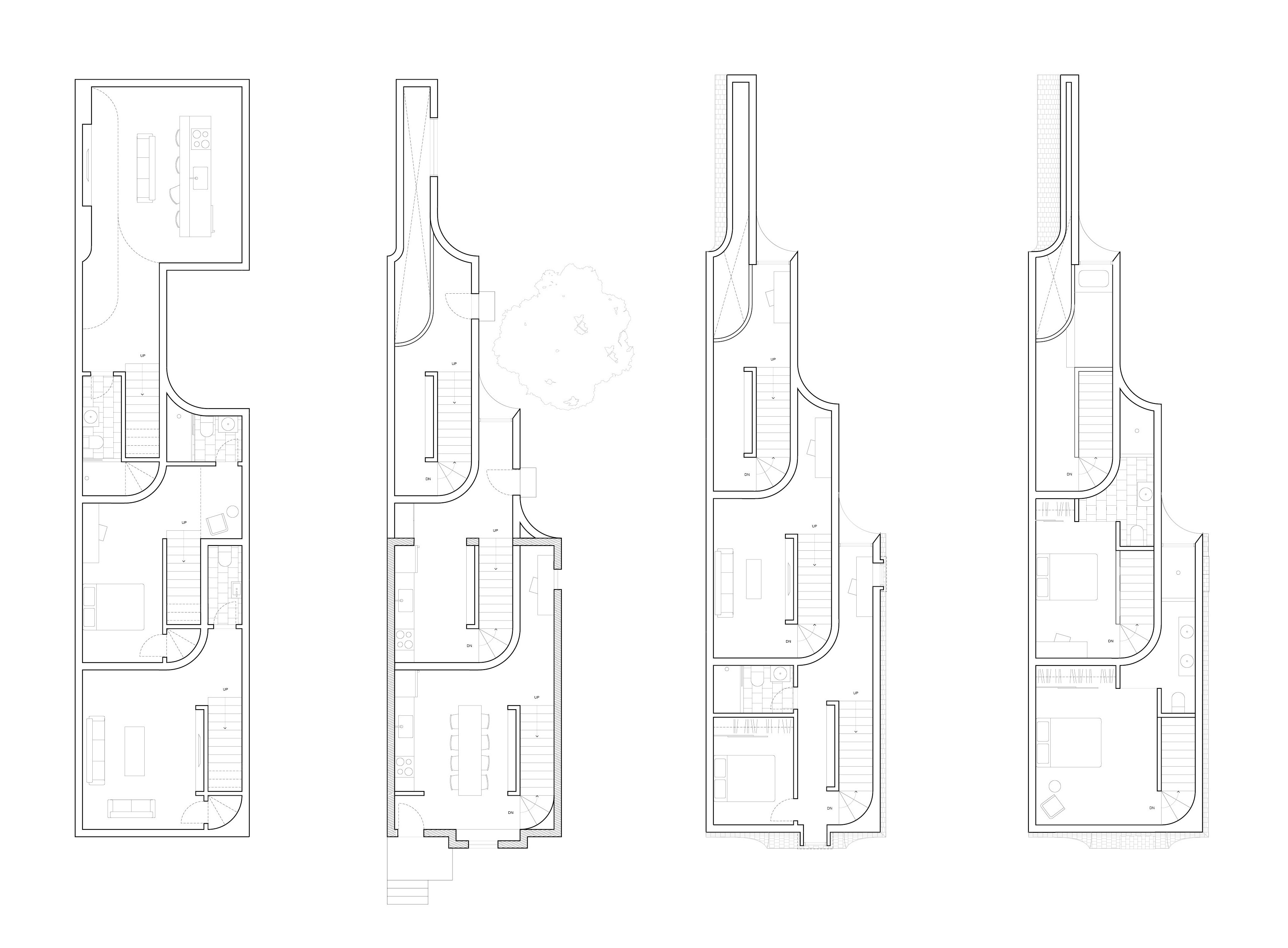

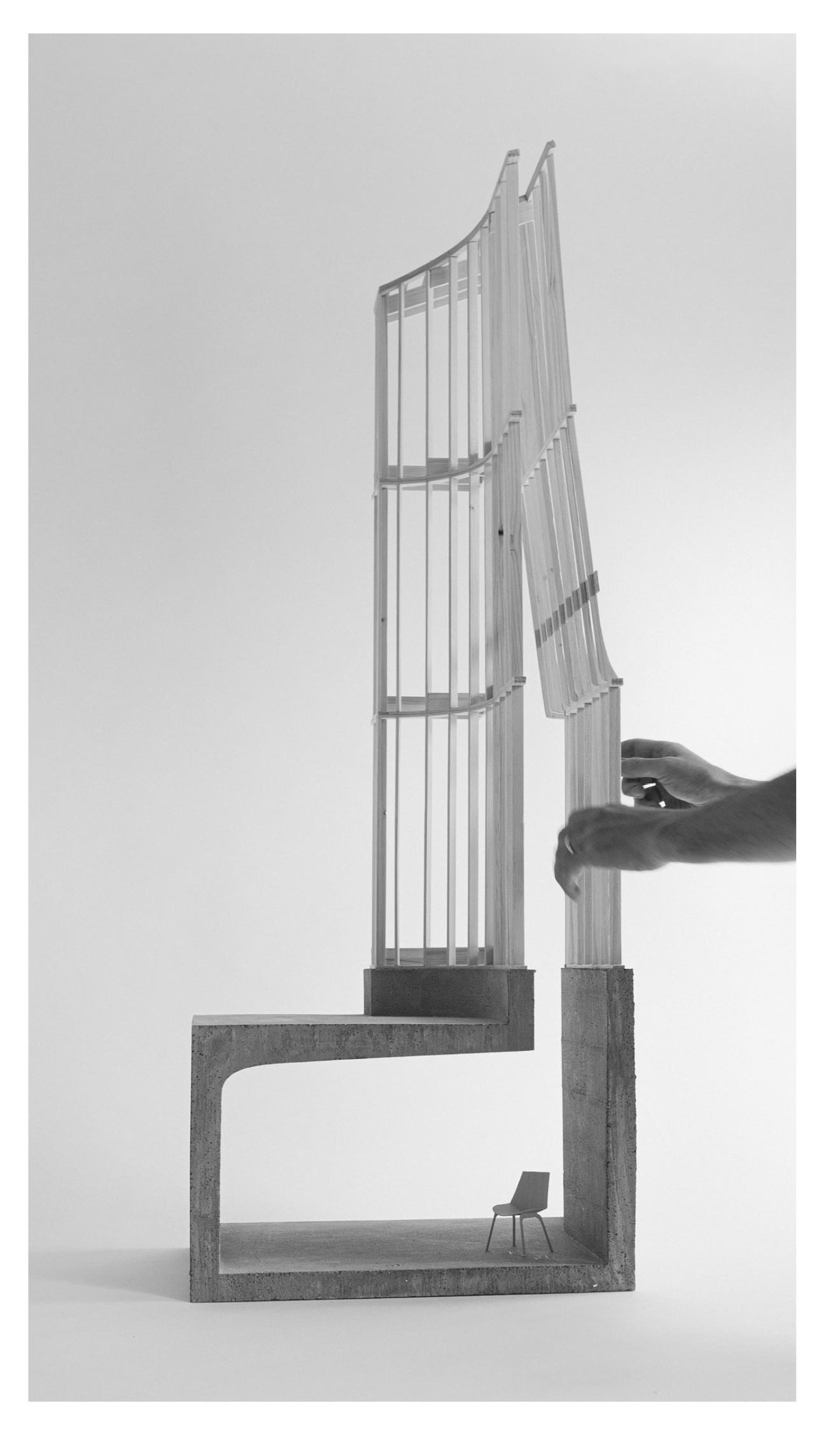
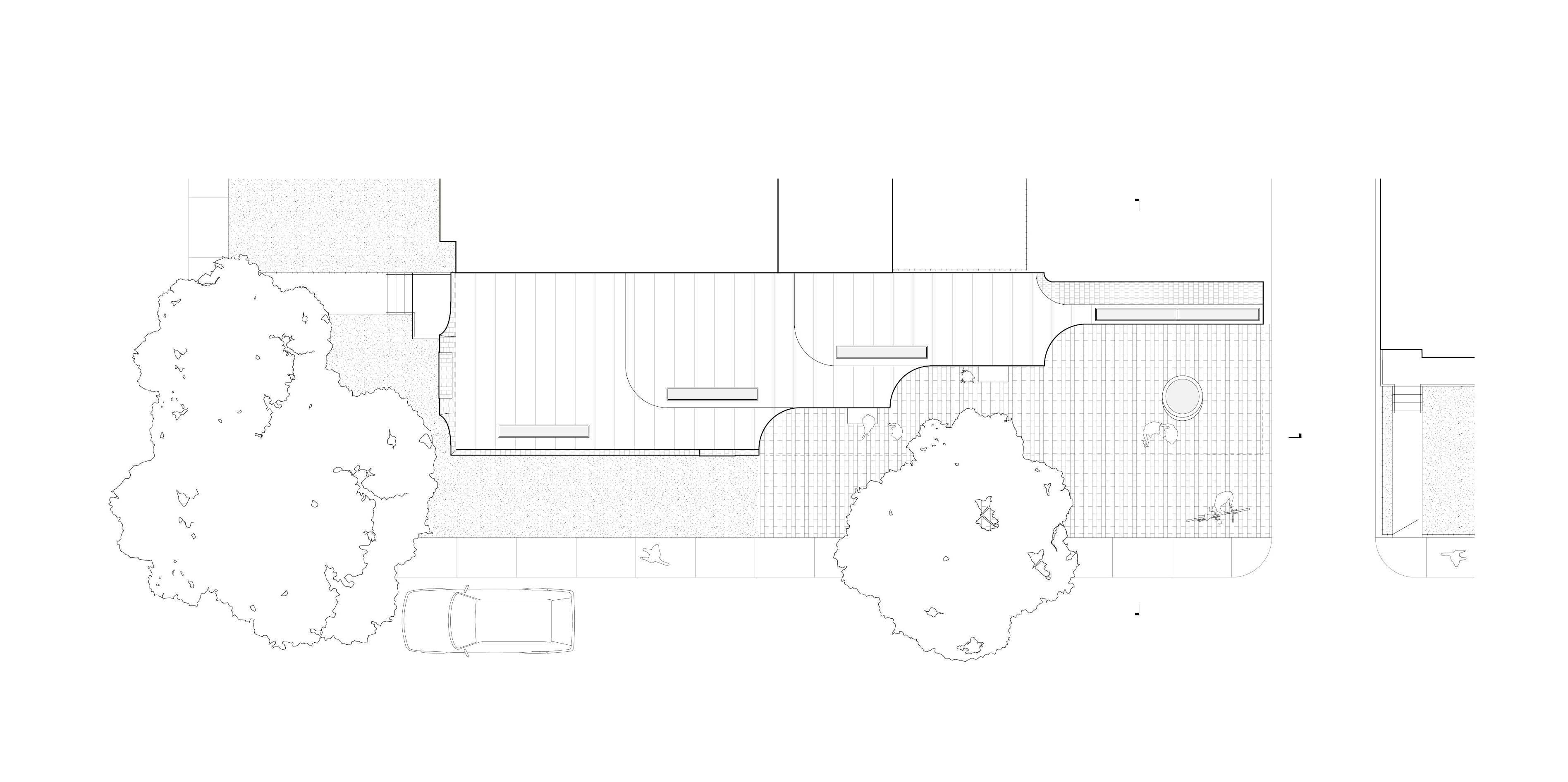

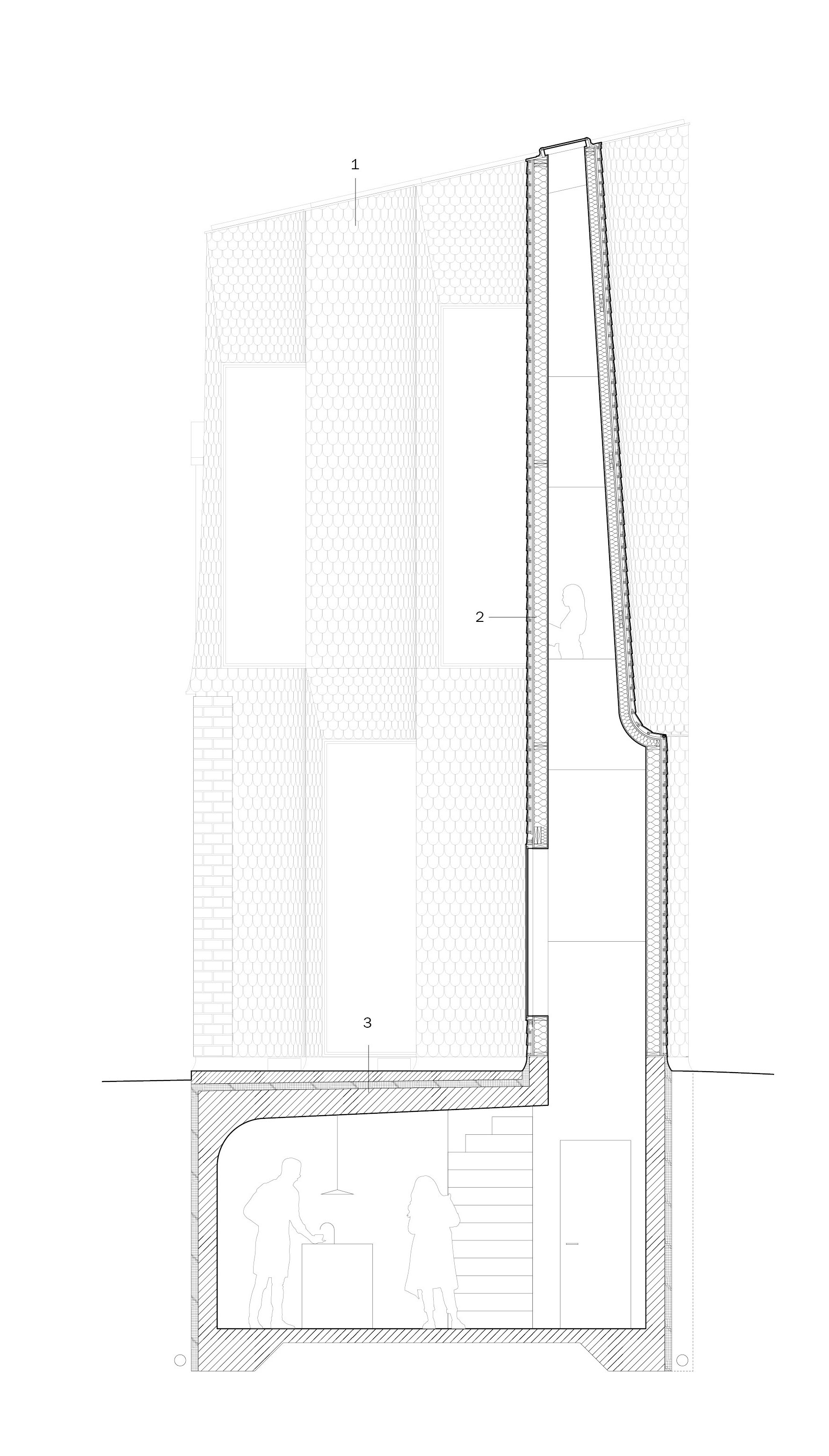
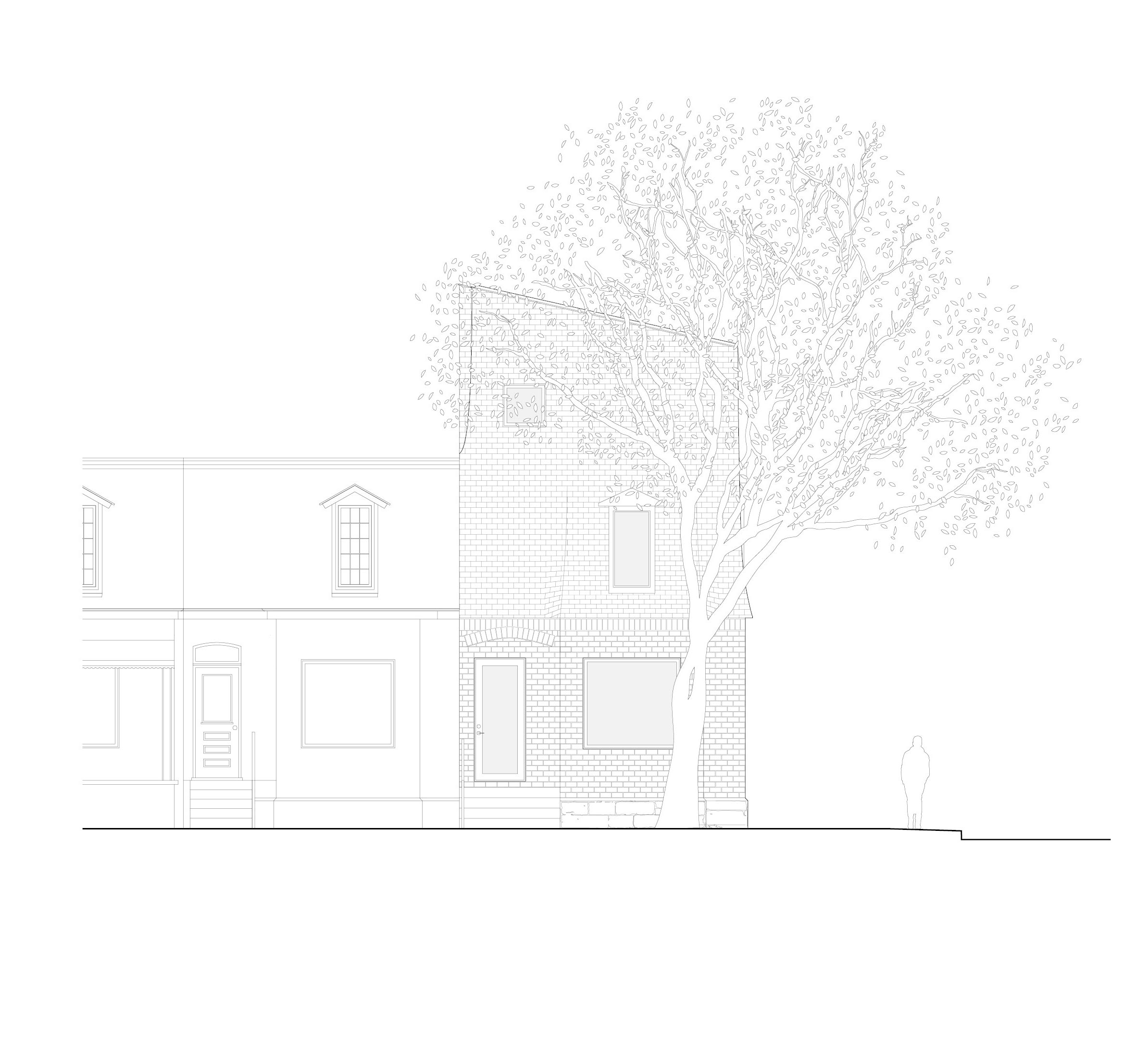
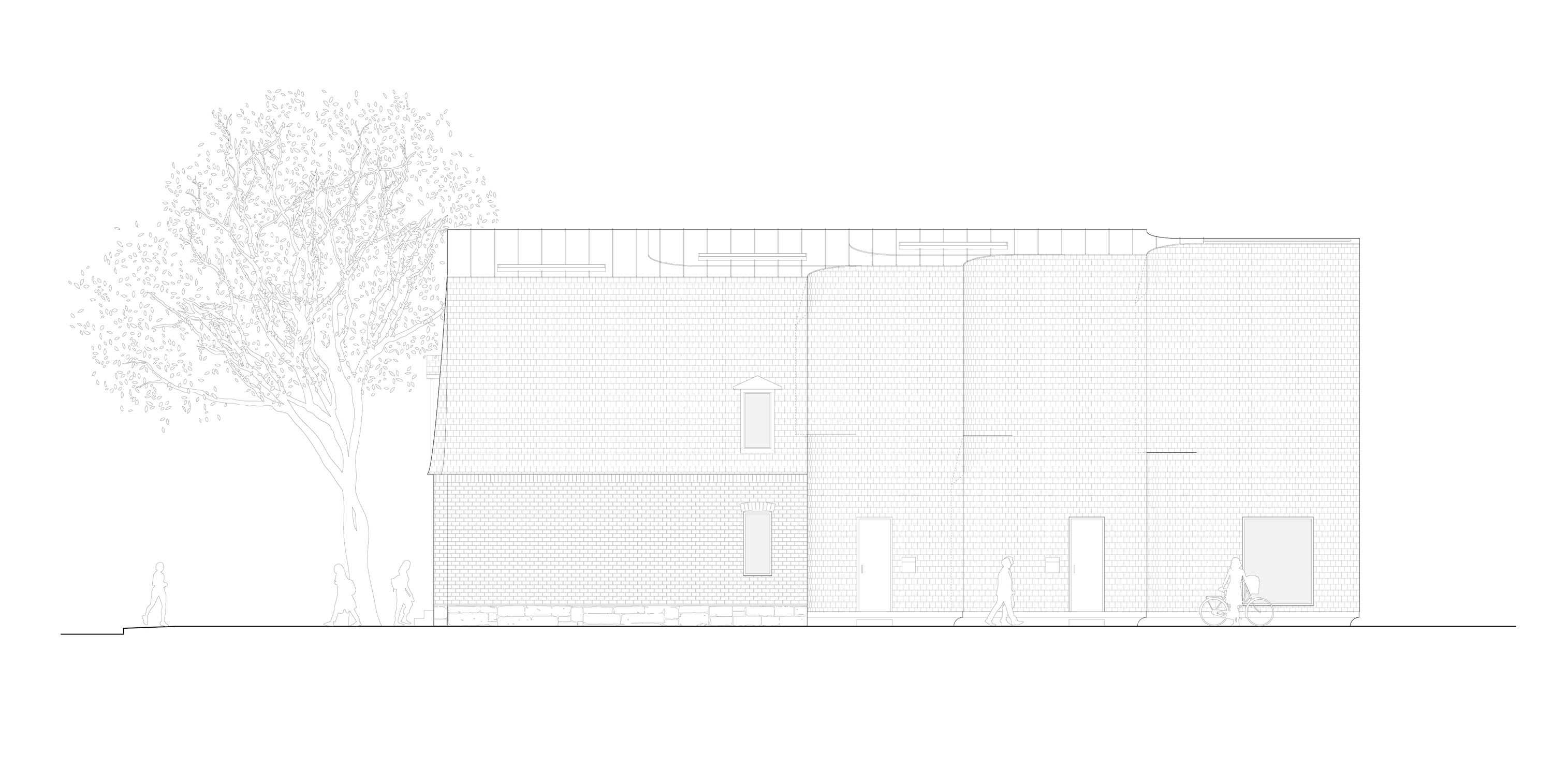
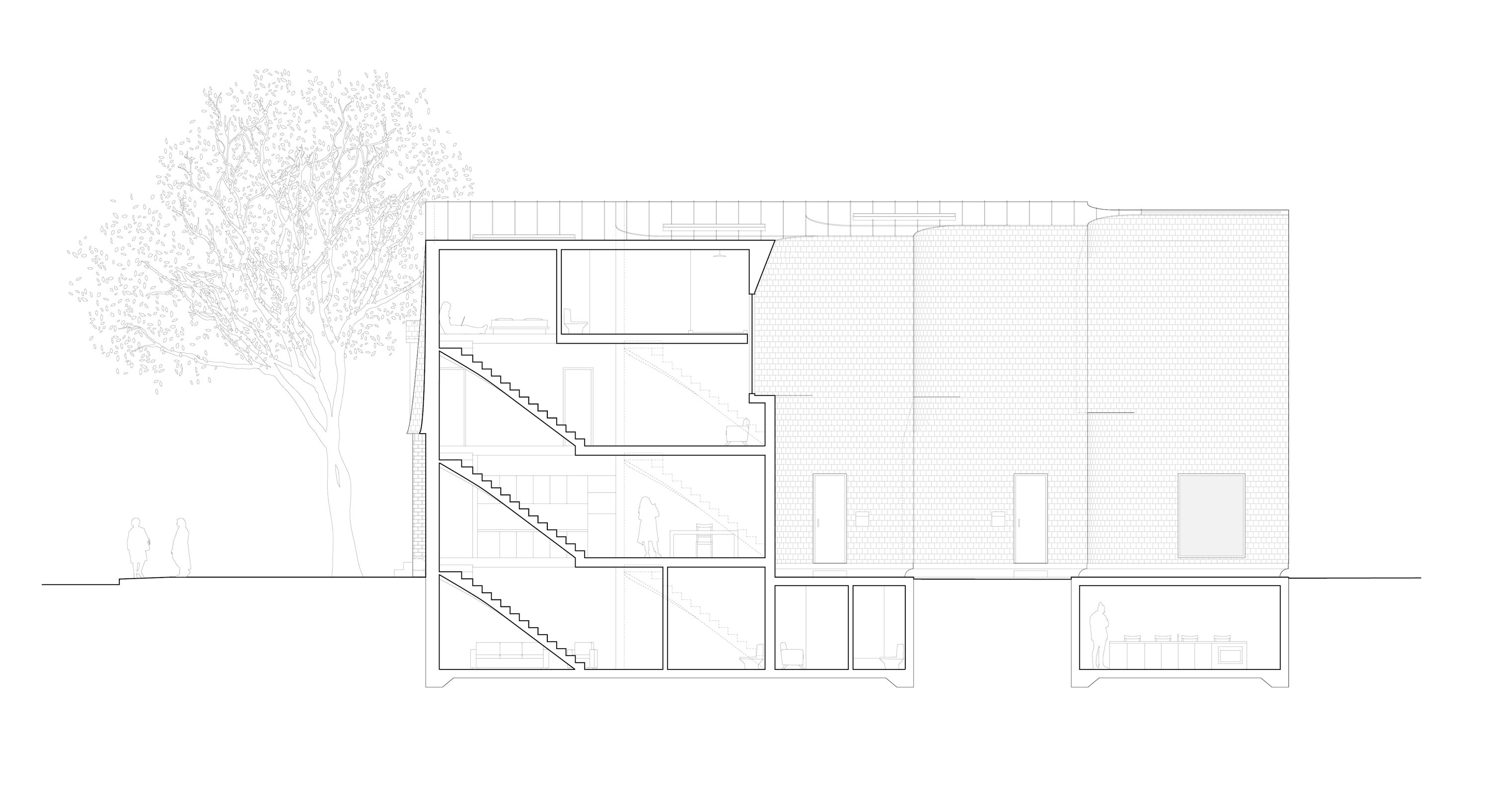
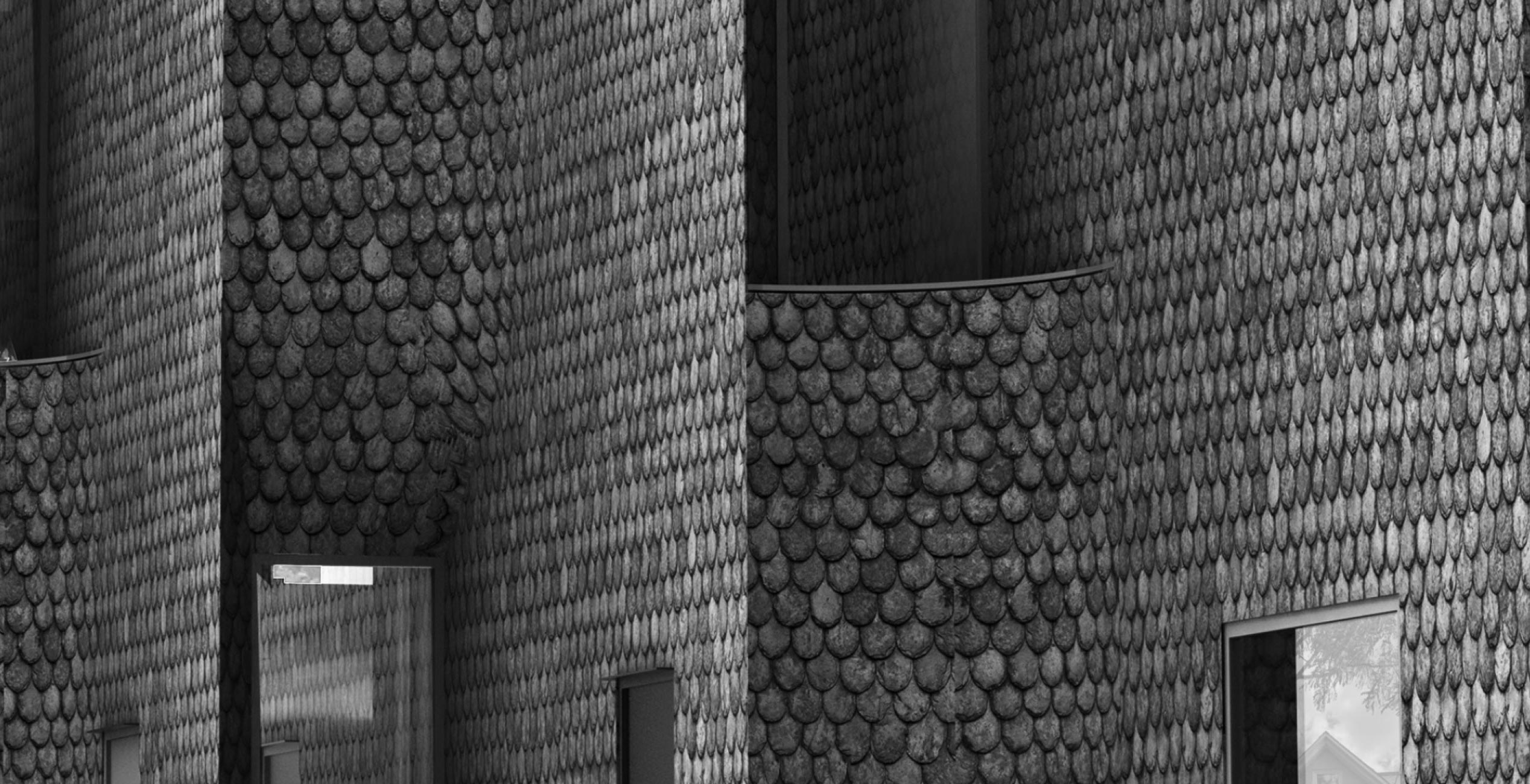
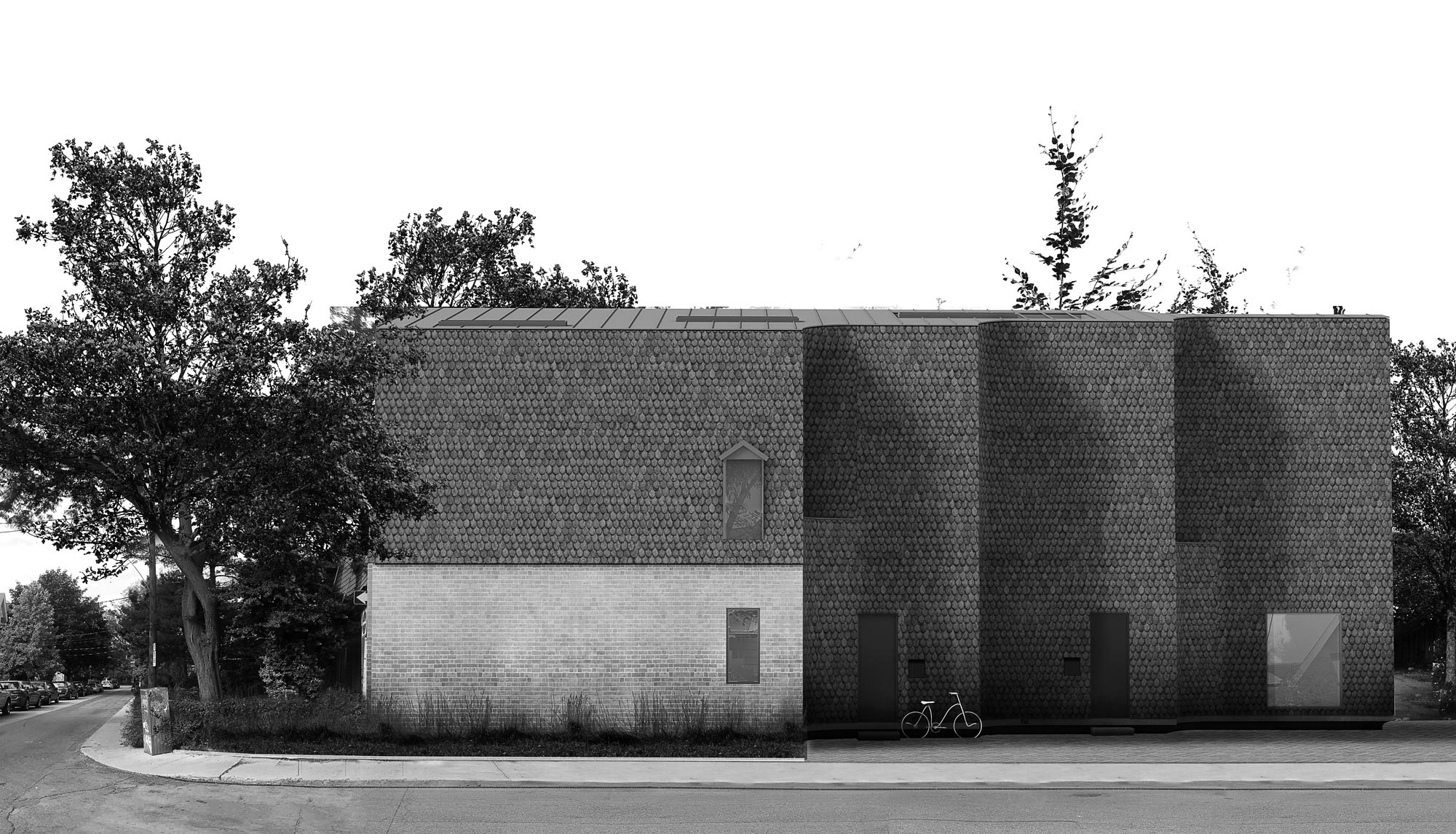
Project Description
Toronto’s urban neighbourhoods have a corner problem; made up of an array of narrow lots, the corner often finds itself in a peculiar predicament in that the standard type rarely adjusts to suit its place on the block. The resulting building makes little attempt to address its additional street-frontage and the backyard is exposed to the street.
Tasked with fitting three new units onto a corner lot with an existing Victorian building, we took the brief as an opportunity to propose a new type that is specific to this urban condition.
The impulse to reconcile the mis-aligned side of the original building and setback front wall of its neighbour becomes a way to explore meaningful gestural figuration in architectural form as the mansard roof sitting on the existing brick base was extended to cover the new third storey and the rear addition. After this continuous surface wraps the front facade around the corner it steps back three times in order to align the new addition with the neighbouring building to the rear and register the break between the three nested units. As an abstracted extension of the original form, this corbeled massing strategy creates a continuity between the two street walls, conceals the informal character of the interior of the urban block, and anticipates further development within.
Clad in slate shingles, the material choice for the new addition blurs the boundaries between old and new and alludes to the standard light wood framed construction underneath. This traditional technique of cladding light wood frame is not only economical and practical, it also allows for the freedom of formal expression to be fully accentuated by the richly textured surface. A subtle reveal connects the lightweight tectonic expression above to the heavy concrete volume below. Seen from the sidewalk, the side entry doors hints at the units inside and figurative openings offer a glimpse into the lives that unfold within.
Within each of the interlocked units, each space—its use loosely prescribed through and object placed in a room—is stacked vertically across four floors and connected by a compact staircase. While this repeats in each unit, the corbel results in a plan that compresses as it extends towards the rear, adding spatial variety in each unit and from one unit to the next.
Overall, the versatility of the strategy allows it to be applied to any number of corner lots in this part of the city, making the project a set piece that suggests a new type for Toronto’s residential neighbourhoods.
